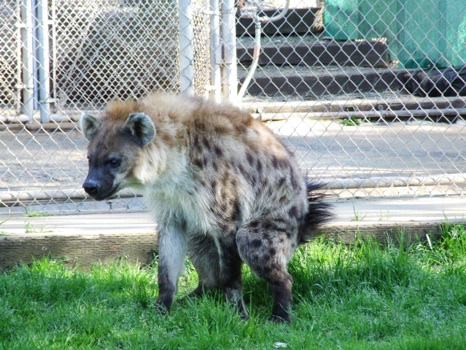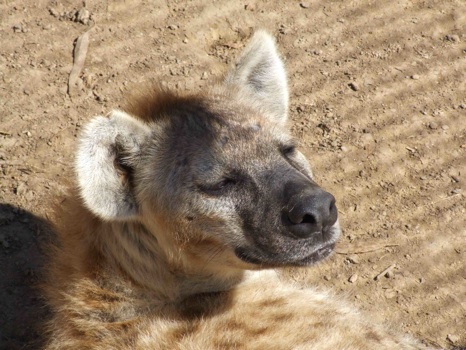Just Giggling? Information Content of the Hyena’s Laugh
Nicolas Mathevon - mathevon@univ-st-etienne.fr
Université de Saint-Etienne, France
(Currently Visiting Miller Professor at the University of California, Berkeley)
Aaron Koralek
Steve Glickman - glickman@calmail.berkeley.edu
Frédéric Theunissen - theunissen@berkeley.edu
University of California, Berkeley
Popular version of paper 4pAB3
Presented Thursday afternoon, May 21, 2009
157th ASA Meeting, Portland, OR
The spotted hyena, Crocuta crocuta, is a social carnivore, living in multi-male, multi-female "clans" that range in size from 10 to 90 individuals. The social organization of a clan features a matrilineal social system, with a rigid dominance hierarchy among female matrilines. But females typically remain in the clan of their birth, while males disperse from their natal clan at puberty. In nature, all adult females dominate all adult immigrant males during feeding at kills and in other aspects of daily life. Within their clan, individuals are able to effectively discriminate and rank congeners. To do so, hyenas may be using multiple sensory modalities (visual, chemical and acoustic).

Hyenas are well known for their vocalizations, which eerily dominate the soundscape at night in the African savannah. The vocal repertoire of the spotted hyena is large, with more than ten different vocalizations. Since hyenas are predominantly nocturnal, vocal signalling is a privileged channel, used for both long- and short-range communications. For instance, the loud “whoop” is primarily used as a signal toward remote individuals, permitting acoustic interactions between spatially dispersed members of a clan, or between members of different clans. Alternatively, the “grunt” or “soft growl” is uttered during close meeting of clan mates and remains barely audible after a few meters of propagation.

Among the vocalizations used during interactions between adult clan-mates, we now focus on the “giggle call,” often referred as the"laugh" of the "laughing hyena."Giggles are high-frequency sounds, commonly emitted in bouts, and often emitted when hyenas are engaged in competitive feeding on a common prey. Although whoops have been the subject of some excellent field reports, acoustic features of the giggle call have not been analyzed, presumably because of difficulties in isolating giggles from individual animals in the natural habitat. The captive colony of spotted hyenas, maintained at the Field Station for the Study of Behavior, Ecology, and Reproduction (University of California, Berkeley), displays the primary behavioral attributes of spotted hyenas in nature, including formation of a matrilineal social system and adult female dominance over adult males, although the hyenas are maintained in small groups. The existence of this captive colony permitted the recording of giggles from individual hyenas. Accordingly, we recorded and analysed the calls of 17 spotted hyenas, comparing their acoustic properties during competitive feeding. Our analysis reveals that the hyena’s laugh encodes information about individual identity, dominant/subordinate status and age, giving receivers cues to assess the social position of an emitting individual. Each individual produces idiosyncratic giggle notes and, on average, the fundamental frequency or pitch of these notes decreases with age. The giggle bouts of dominant animals show less variation from note to note (e.g. “ah ah ah ah”) than the giggle bouts of subordinate animals (e.g. “ah eh ih ah”).

As the result of transmitting a broad range of messages related to the emitter, the hyena’s giggle / laugh may play an important role during social interactions. Together with other vocalizations, and chemical, tactile and visual channels, giggles contribute to an array of communicative signals that that are appropriate to the complex social system of the spotted hyena.
